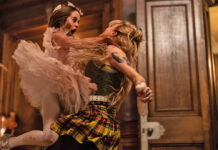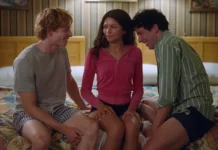Growing up as an Asian woman in a predominantly white area, the alienation was subtle but aggressive. For the first seventeen years of my life, I attempted to hide myself through the clothes I wore. I thought if I dressed in ways that hid my body, I could hide from criticism and prying eyes.
College, for many, is the first taste of freedom that adult life offers. This includes the freedom to present yourself however you like. With UC Riverside’s demographics showing that 87% of their students were members of minorities or people of color, the school impacted the way I and many others are able to present themselves immensely. It is a safe place for many students to embrace their culture, especially with many clubs dedicated to celebrating heritage such as the Korean American Student Association (KASA) and Chinese Student Association (CSA) to name a few. When people think of fashion, they may think of just clothes. Fashion, however, is a part of identity, which extends far past the realm of solely clothes.
One student from UCLA drove all the way to UC Riverside just to attend the VAIN fashion show. When questioned about his thoughts, he stated he appreciated the way that fashion is able to keep one’s individuality while still being able to bond with others through the means of style. Fashion is the way you are able to express yourself to others without needing to verbalize anything. It allows for creativity and expression but with yourself as a canvas.
Fashion is a movement. It has the ability to bring people together, which is demonstrated through the many clubs dedicated to fashion, such as Vain UCR or Fashion and Sneakers at UCI. Time and time throughout history, fashion has been used to spread awareness — such as in the case of Armita Abbasi, where social media users adorned her signature eyeliner as a way to demonstrate their support for the Iranian protesters.
This is also the case for denim, especially during the civil rights movement. While it is currently viewed as a modern staple, it was once a symbol of the struggle for Black freedom. Previously, the use of jeans and denim overalls were uniforms for Black sharecroppers in the rural south. The Black middle class at the time felt they needed to dress that way in order to assimilate and appear respectable. Men and women activists in the Student Nonviolent Coordinating Committee, however, decided to reclaim their power and turn denim workwear to stand together with the working classes. This not only made a bold statement about the class system and hierarchy, but made it much more practical for the organizers to mobilize in denim as opposed to other fabrics.
Another instance of fashion being used as a protest is in the case of The Black Panther Party. The Black Panther Party, also known as the Black Panther Party for Self Defense, was founded in 1996 in Oakland, California by Bobby Seale and Huey P. Newton. Their party’s original mission was to patrol and protect African American neighborhoods from police brutality. As time went on, they accumulated more than 2,000 members and operated in multiple major American cities. The Party had a uniform that consisted of black leather jackets, black pants, blue shirts and their infamous black beret. This beret was a resounding token of respect and a signature that conveyed their symbols of militancy.
This is what makes fashion so important. It surrounds us, and no one person is excluded. Fashion is powerful — it has the ability to bring everyone together, but still manages to keep each person’s individuality.








